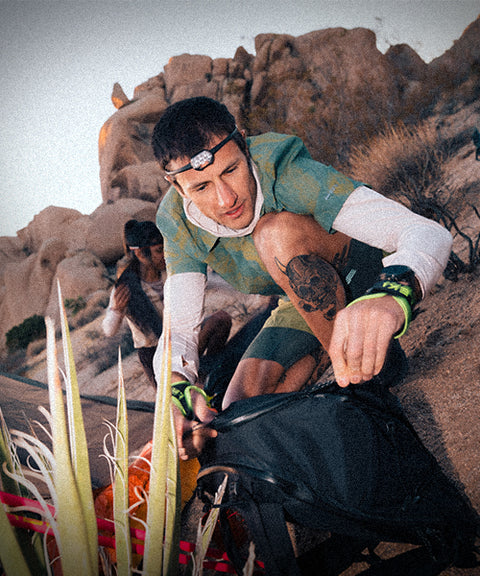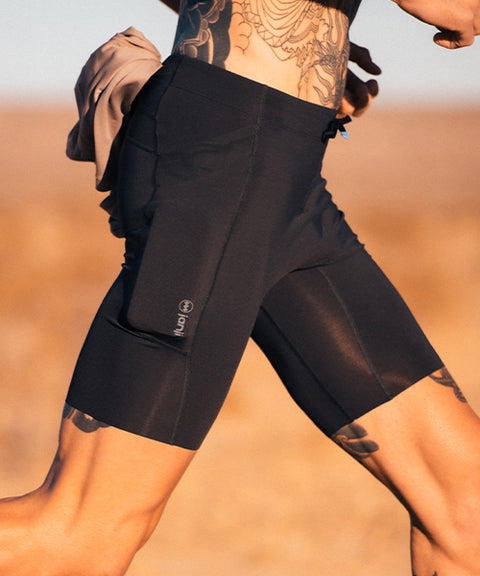title-color:#20568B
background-color:#BDD35A
Subtitle Above: INTRODUCING
Subtitle Below: JAVA, INDONESIA
--BEGIN CREDITS--
CREDITS
Alif Ghifari, photographer
WORDS
Fazlur Muhammad
--END CREDITS--
Each season, we collaborate with artists from the region that inspires our collection, and they help to develop the designs that adorn our kits.
This season we collaborated with multitalented artist Arwin Hidayat. Arwin uses a traditional Batik technique that involves drawing on a textile with wax using a tool called a 'canting'. His artwork is rooted in traditional folklore, with motifs of sea animals and plants.
Arwin's designs can be found on products with our Batik Amber, Batik Sea, and Batik Purple colorways. We asked him what Batik means to him, and the significance of the mythical creatures in his artwork.
--END INTRO--
 
|
“Making Batik requires not only knowledge, but also patience, perseverance, and diligence.- Arwin |
Q: How long have you been practicing your art?
A: I entered the world of art after I graduated middle school, and I continued studying at the SMSR Yogya (art school) in 1999. There, I learned art, more specifically painting.
Q: Can you tell us more about the history, legacy and the meaning of the Batik culture?
A: You can find Batik in almost every part of the world. When we’re learning its history, we can't find who started it. You can find a similar product in Africa and other countries as well. The art of Batik is actually about painting by blocking a fabric from absorbing color, by using wax. Today we use paraffin, but in ancient times, people used animal oil, known in Javanese as ‘gajih.’ We don't know when people started creating Batik. You can even find it in the Borobudur temple reliefs: You can find statues using fabric with certain motifs, and they used to use natural coloring materials. Even as a person who makes Batik, I don’t know who founded it.
If we are talking about the meaning of the Batik culture, learning how to make Batik is learning how to be patient. Drawing with canting is not as easy as using other tools. Making Batik requires not only knowledge, but also patience, perseverance, and diligence, just like craft art, the oldest form of art.
 
|
 
|
Q: What do you like most about making Batik?
A: I enjoy the process, and there are a lot of my artworks that failed--countless! There are a lot of unexpected techniques that I didn’t know about when making Batik, but sometimes the result comes out better than I expected. This applies to every piece of art that I do. Especially when making handmade Batik (batik tulis), every execution can have different results even though we use the same mix. I also like to experiment with different color combinations, as you never know will it work.
Q: There are a lot of beautiful creatures in this batik: amoebas, fishes, octopi, lizards, humanoid. How did you come up with that?
A: I got inspired to mix all of the creatures because our ancestors were seamen, sailing through the oceans to live and find life from the seas.
So I thought, since clean water is also a source of life, like the theme of the product, ‘Janji’ or promise, I can use fishes and ships. However, it is not all me. I was also inspired by an ancient batik called Burontoyo, in which the motifs are fish, turtles, squids; all sea animals that were the source of people’s life. The motifs for this Batik are a mixture of the Burontoyo and my imagination. I tried to combine ancient motifs of animals and plants called the 'lungsurunsuluran' with deformed shapes of sea animals, plants and surroundings. My paintings are usually decorative, that’s why I like to deform the original shapes of things.
“If I cannot preserve the environment, I feel that I am useless as an artist. I think it is crucial to protect our nature, especially if you are creating art about it. |
 
|
Q: You called this artwork ‘drawing with wax on a fabric that brings peace’--can you explain the feeling of how making a Batik brings you peace?
A: Basically it is the same as creating art in general. But drawing using wax means you have to be extremely patient: when you are patient, it brings peace. If you are patient, you will not complain. That’s why when I paint using the canting, I cannot be as careless when I use the brush. I have to follow the flow, be calm, patient, as the process is slow, since you cannot rush making a batik. We have to fill in the parts called ‘isen-isen’ with dots and scales. This process requires us to be calm, patient and not angry. It’s like therapy: getting calmness and patience might be the best thing from creating a Batik.
Q: I know that the relations between the sea and Indonesian maritime history is a thematic element in the artwork. Can you talk about those relations with water?
A: For me, if I cannot preserve the environment, I feel that I am useless as an artist. I think it is crucial to protect our nature, especially if you are creating art about it.
SHOP BATIK PRINTS
Collection Grid
batik-prints











